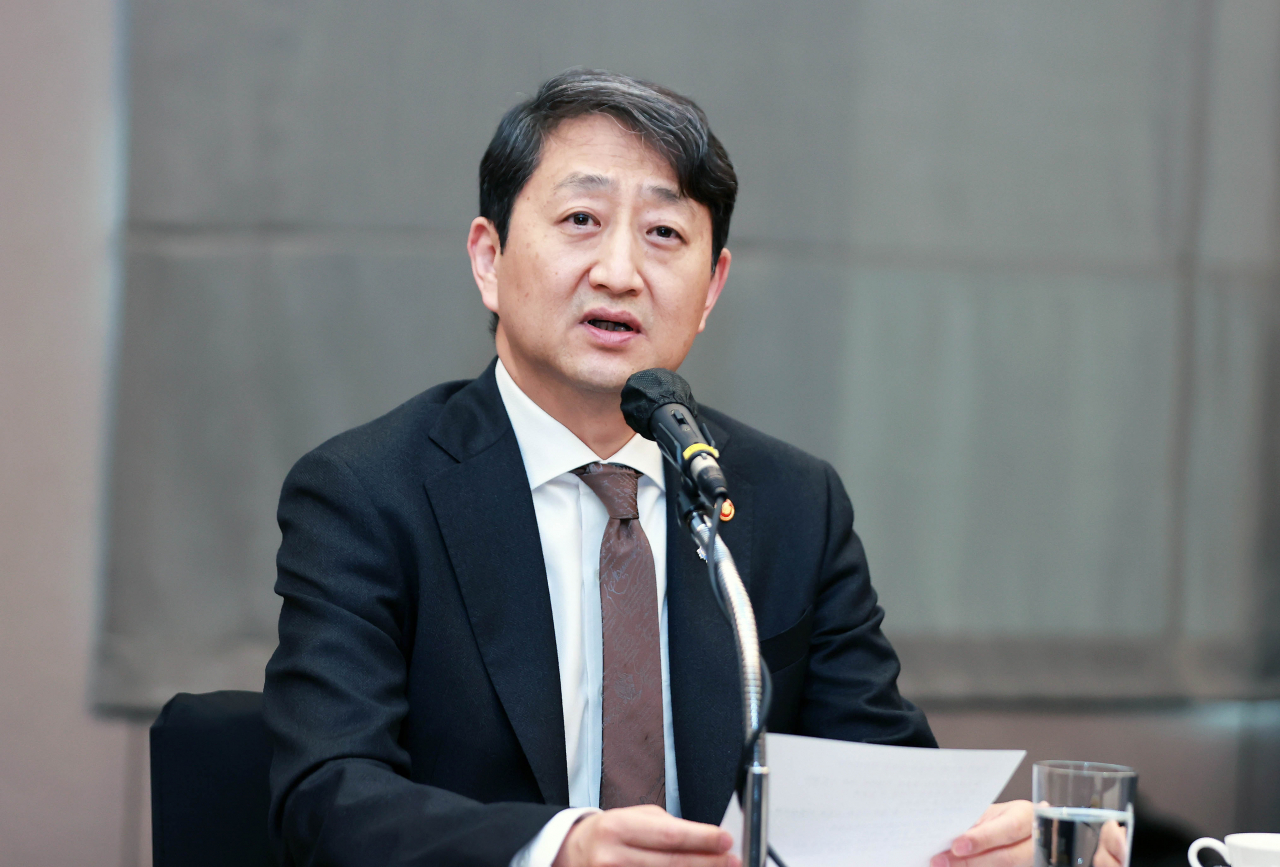 |
South Korean Minister of Trade, Industry and Energy Ahn Duk-geun speaks during a meeting with government officials and executives from the battery and automobile industries at a Seoul hotel on Wednesday. (Ministry of Trade, Industry and Energy) |
South Korea's battery industry has secured a two-year reprieve from the US Inflation Reduction Act restrictions on electric vehicle batteries containing Chinese graphite, giving it time to diversify its supply chain while the Korean government has committed 9.7 trillion won ($7.1 billion) in policy financing to support this transition.
Following negotiations and advocacy by the Korean government and related industries, the US government on Friday agreed to suspend specific provisions of the IRA that would have penalized electric vehicles using Chinese graphite in their batteries. This decision effectively delays these sanctions until the end of 2026.
Graphite is an essential material for producing the anode material in batteries. Prior to this amendment, Korean battery manufacturers, significantly reliant on graphite sourced from China, faced the potential of severe disruptions in their operations. The initial US policy mandated that EV batteries must not include materials from Foreign Entities of Concern -- a category that includes China -- to qualify for up to $7,500 in EV subsidies per vehicle.
Last year, South Korea's top three battery producers -- LG Energy Solution, Samsung SDI, and SK On -- reported revenues exceeding 10 trillion won from battery sales to the US market alone. Without the suspension, over 30 EV models equipped with batteries from these manufacturers would have been ineligible for US subsidies starting next year.
The dominance of China in the graphite supply chain has posed significant challenges for manufacturers, as noted by the Hyundai Motor Group, as well as international automakers like BMW and Volkswagen. The Korean government, recognizing the difficulties faced by its industries, actively engaged in discussions with US counterparts. These discussions involved multiple government agencies, including the Office of the President of the Republic of Korea, the Ministry of Trade, Industry, and Energy, and the Ministry of Foreign Affairs, which all advocated for a relaxation of these stringent requirements.
According to the government, these advocacy efforts were instrumental in achieving the two-year grace period that has now been granted. In their final rule, the US Departments of Treasury and Energy reclassified graphite as an "impracticable-to-trace" mineral, allowing its sourcing from FEOCs without penalty in subsidy eligibility until the end of 2026.
"LG Energy Solution seems to gain the most from this suspension, particularly because of its relatively heavy reliance on cost-effective Chinese materials. The company's Ultium Cells line, which was already under a supply contract with Chinese battery separator manufacturer Chuangxin until 2024, now has the extra time needed to adjust its sourcing strategies without disrupting its North American operations," said Kim Chul-joong, a battery industry equity researcher at Mirae Asset Securities.
In response to the US policy shift, the Korean Energy Ministry convened a high-level industry meeting Wednesday, chaired by Minister Ahn Duk-geun, to discuss the revised US stance and strategize future responses. Korean executives at the meeting expressed their relief and gratitude towards the Korean government for its effective diplomatic engagement.
"We've managed to negotiate a crucial two-year pause on the FEOC restrictions, but the real work lies ahead in diversifying our sources for critical minerals beyond China," said Minister Ahn during the meeting.
The revised IRA guidance also mandates that the automotive industry present a plan by 2027 to reduce reliance on graphite from FEOCs. To reduce reliance on Chinese graphite, the Korean government pledged to invest 9.7 trillion won in policy financing over the next two years. Through strategic international partnerships under frameworks like the Indo-Pacific Economic Framework and the Mineral Security Partnership, the government will facilitate efforts to secure essential minerals from nations with established free trade agreements with the US.
China possesses the world's third-largest natural graphite reserves and imports additional supplies from Mozambique and Madagascar for processing. It dominates the spherical graphite market, also known as the battery-grade graphite market, controlling over 99 percent of its global production based on its advanced refining capabilities and lower-cost production despite the significant environmental impact associated with its extraction and processing. This situation has deterred other countries from entering the market, even with US incentives to diversify supply chains.
Korean firms have been proactively seeking alternative sources. In February, SK On signed a contract with US-based Westwater for graphite supplies starting in 2027. Posco Future M in March finalized a six-year agreement to procure natural graphite from Africa through Australian specialist Syrah Resources, with an annual supply commitment of 24,000 to 60,000 tons.

![[KH Explains] How should Korea adjust its trade defenses against Chinese EVs?](http://res.heraldm.com/phpwas/restmb_idxmake.php?idx=605&simg=/content/image/2024/04/15/20240415050562_0.jpg)






![[Herald Interview] How Gopizza got big in India](http://res.heraldm.com/phpwas/restmb_idxmake.php?idx=644&simg=/content/image/2024/11/20/20241120050057_0.jpg)


![[KH Explains] Dissecting Hyundai Motor's lobbying in US](http://res.heraldm.com/phpwas/restmb_idxmake.php?idx=644&simg=/content/image/2024/11/20/20241120050034_0.jpg)